|
|
 |
|
Big Bad Timeline of Guitar History
1932
dedicated electric guitar amplifier "Electro String amp"
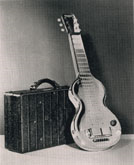
|
1932 Beauchamp and Rickenbacke form the Electro String company and build the first production-model dedicated electric guitar amplifier. After creating this model, the company hired engineer Ralph Robertson to improve the design. Robertson would go on to develop new circuitry for the Electro String amps.
|
1939
First electronic spring reverb unit
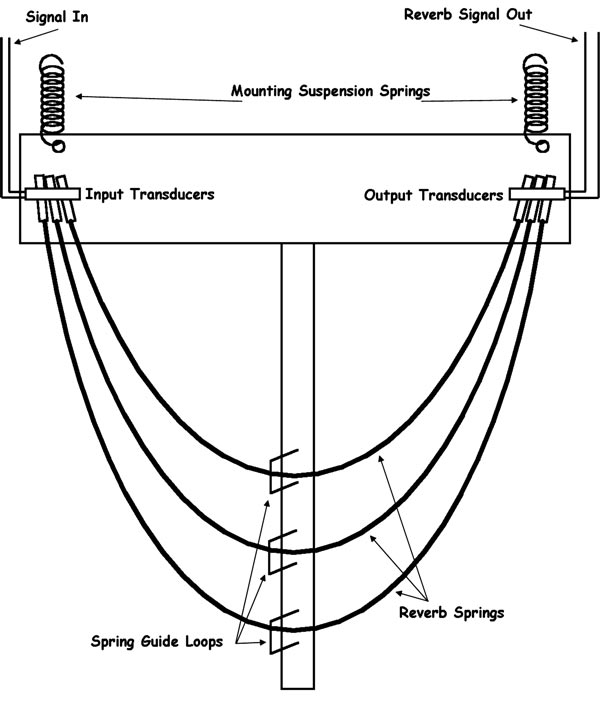
|
The first viable electronic reverb units are built, begining life for use with Hammond organs. These were refered to as "necklace" due to how the springs were mounted.
|
1940
First solid body electric guitar
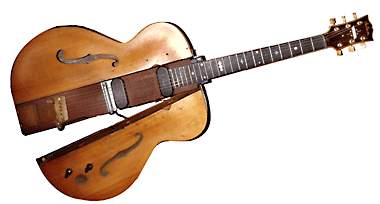
|
Les Paul created prototype instrument, a one-off solid-body electric guitar known as "The Log", which was a length of a 4x4 piece of lumber with a bridge, neck, strings, and hand-wound pickup. The Log was built after-hours by Paul at the Epiphone guitar factory, and is one of the first solid-body electric guitars.
For the sake of appearance, he attached the body of an Epiphone hollow-body guitar sawn lengthwise with The Log in the middle. This solved his two main problems: feedback, as the acoustic body no longer resonated with the amplified sound, and sustain, as the energy of the strings was not dissipated in generating sound through the guitar body. He approach Gibson with the idea in 1941, the solid body Les Paul guitar would not see production until 1952.
|
1941
First commercial marketed tremolo
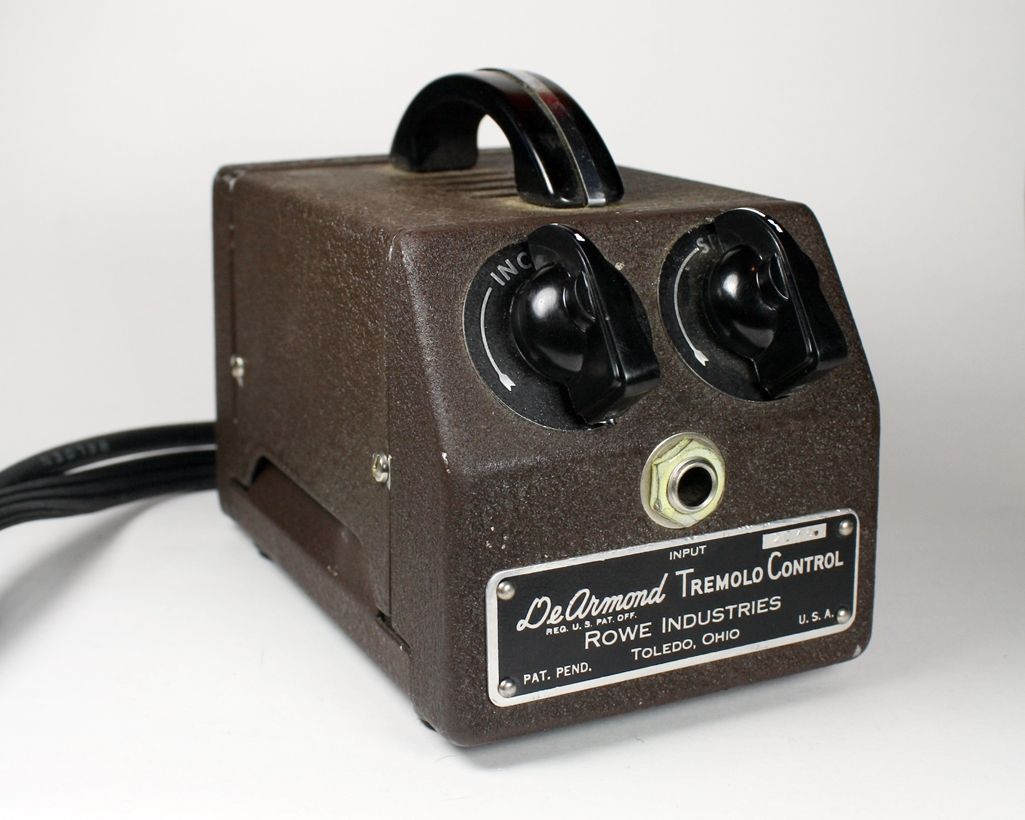
|
Introduction of the Dearmond Tremolo Control, the first commercial tremolo. These units used liquid to short the signal line to the ground cutting the volume.
|
1941
First Leslie rotating speaker
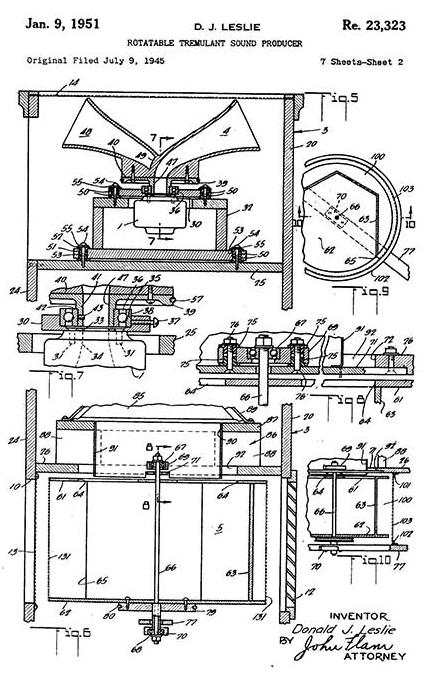
|
First Leslie rotating speaker is invented, (vibrato/doppler effect). The patent is filed in 1945 and granted in 1951.
|
1947
First guitar amplifier with vibrato
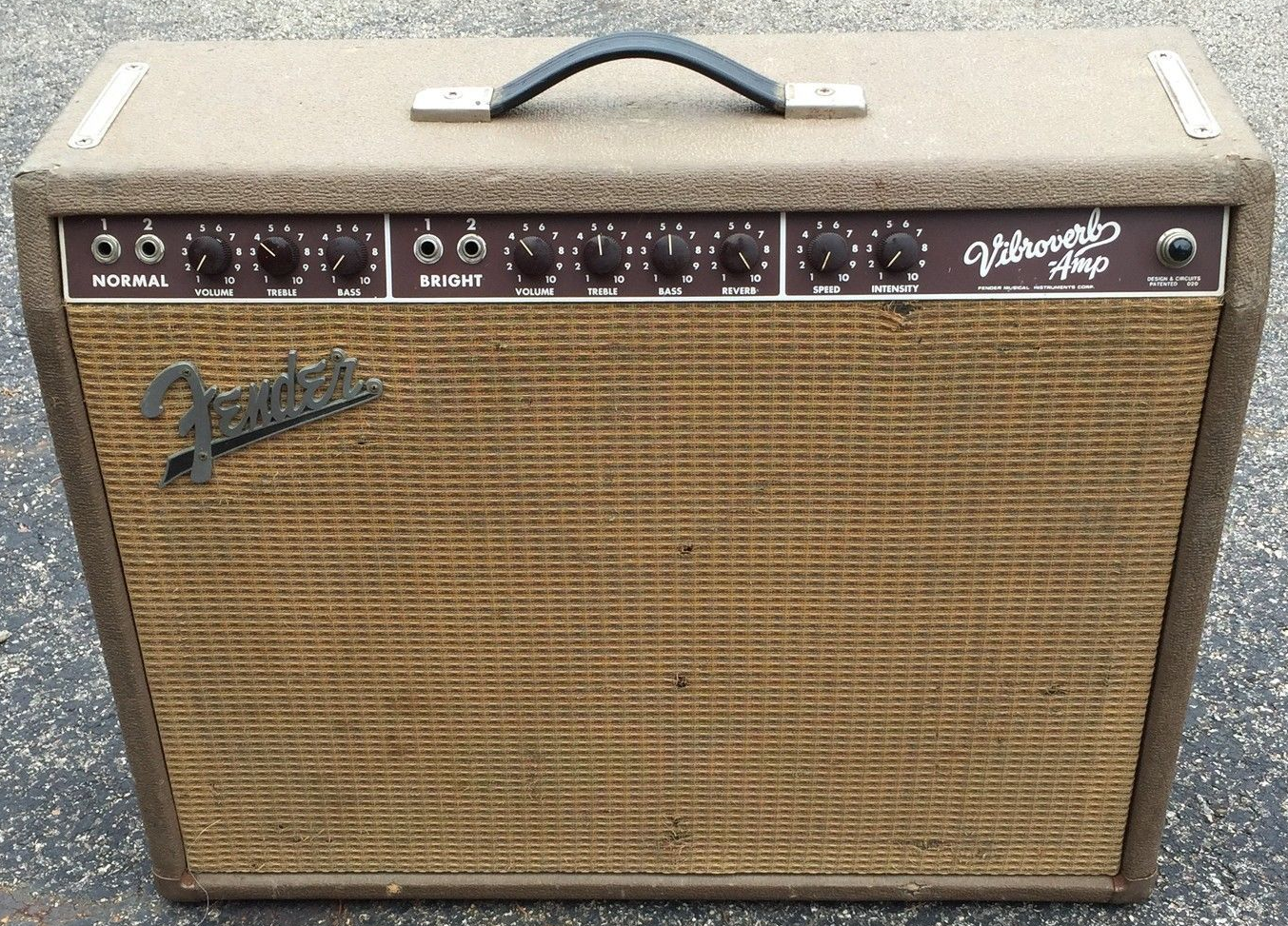
|
Nathan Daniel created the first guitar amplifier with vibrato in 1947, the year he founded the Danelectro company. He called it a "Vibrato System for Amplifiers".
The patent was granted in 1949, but we're not sure exactly when the circuit was first used in a Danelectro amp, though Tremolo definitely appears on Danelectro's 1950s Special model amps.
1947 Multivox Premier 66 Tremolo Amplifier
1949 Gibson GA-50T
1955 Fender Tremolux
|
1950
First production solid body electric guitar
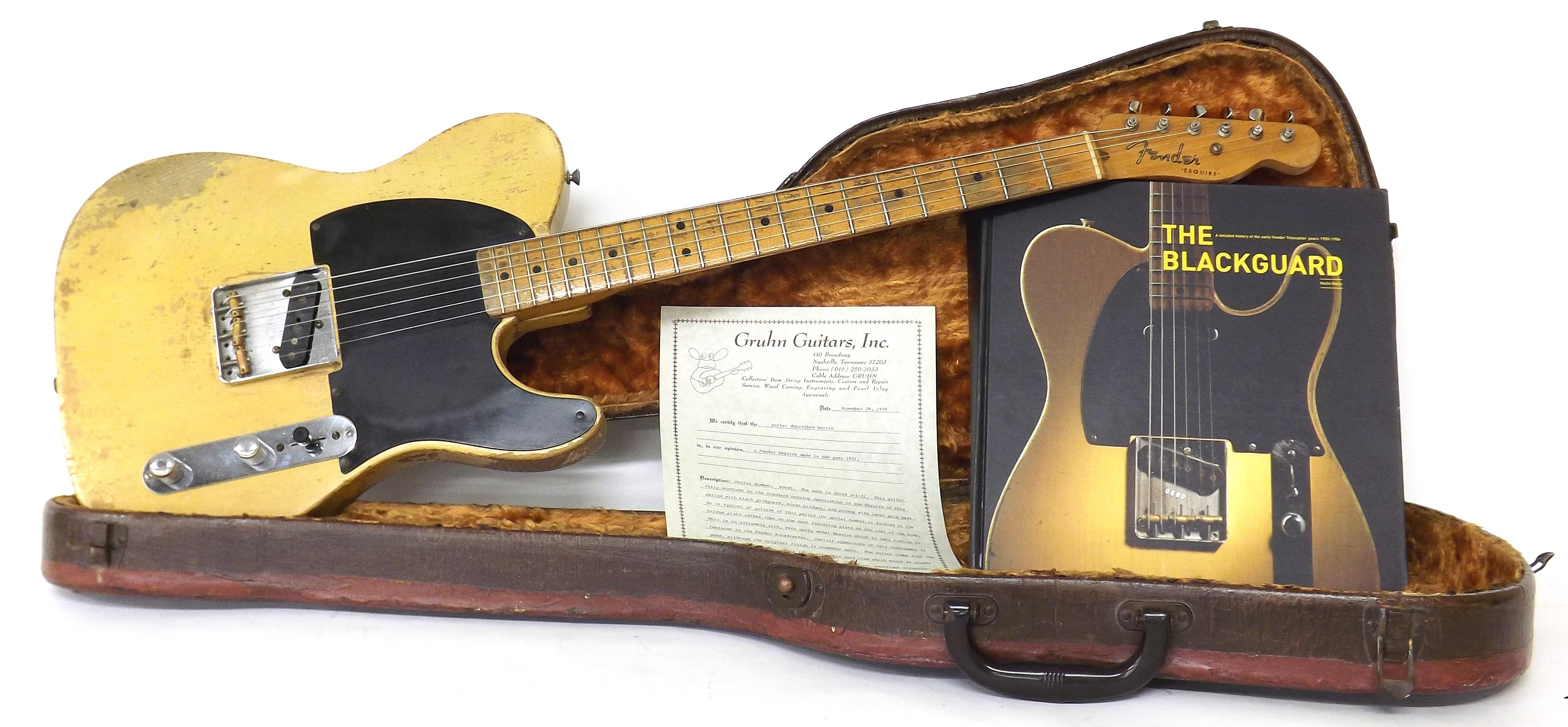
|
Fender began marketing its Esquire and Broadcaster solid body guitars, later renamed the Telecaster in 1952.
|
1951
The first tape echo delay

|
Les Paul uses two tape machines coupled together to create the first tape echo delay.
|
1953
EchoSonic amplifier, the first amplifier with tape echo built in
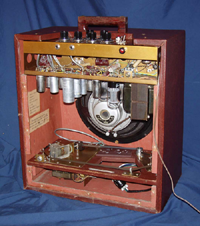
|
Ray Butts builds the first amp with tape echo built in, the EchoSonic amplifier
|
1954
The first magnetic disc echo, Ecorec.
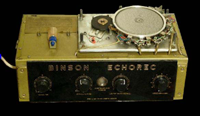
|
The first batch of Ecorec magnetic disc echo machines were manufactured by Binson.
|
1955
The first first true vibrato.
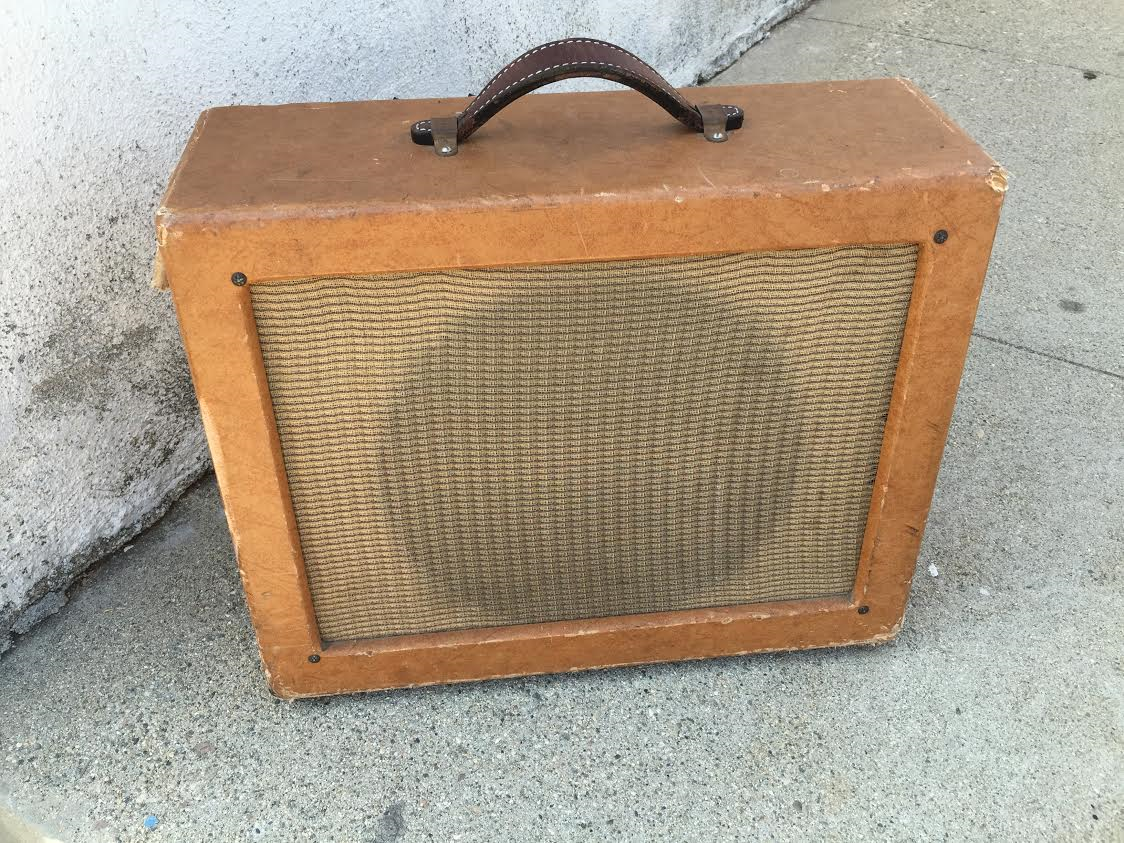
|
1955 Magnatone's Vibra-Amp Model 113, first true vibrato. Acutal pitch shifiting vs the tremolo which is often labled vibrato.
|
1958
The first stand alone tape echo units.
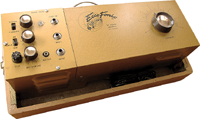 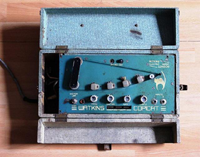
|
The first stand alone tape echo units are made by Eccofonic and Watkins.
|
1959
Oil Can Delay Patent granted to TelRay

|
June 30th 1959, TelRay/Morley was granted a patent for the Oil Can Delay. This device could emulate vibrato, a rotary speaker or create delay. It wouldn't be until the mid 1960's that the device would hit the market.
|
1963
The first Marshall amplifiers

|
This year we saw the intrduction first Marshall amplifiers, the JTM 45
|
1961
The first stand alone Fender Reverb Unit and the first Echoplex unit.
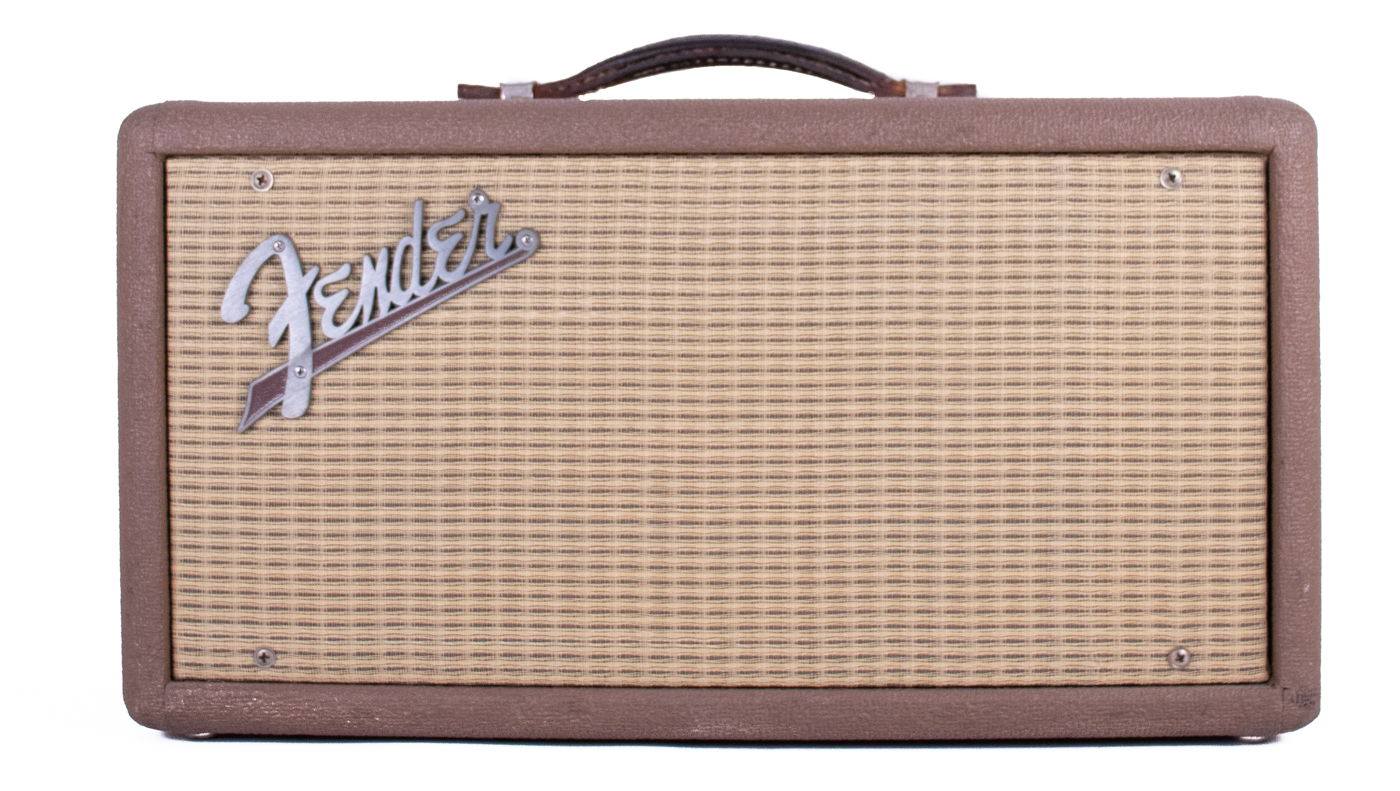 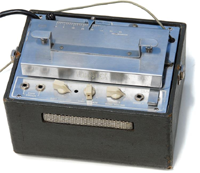
|
This year we saw the intrduction first stand alone Fender Reverb Unit and the introduction of the very first Echoplex unit.
|
1962
Maestro Fuzztone FZ1

|
The Maestro Fuzztone FZ1, the very first commercially availabe fuzz unit is introduced.
|
1963
First Fender amp with reverb

|
Fender put's the first reverb in an amp, the Virboverb.
|
1965
Dallas Rangemaster Treble Booster
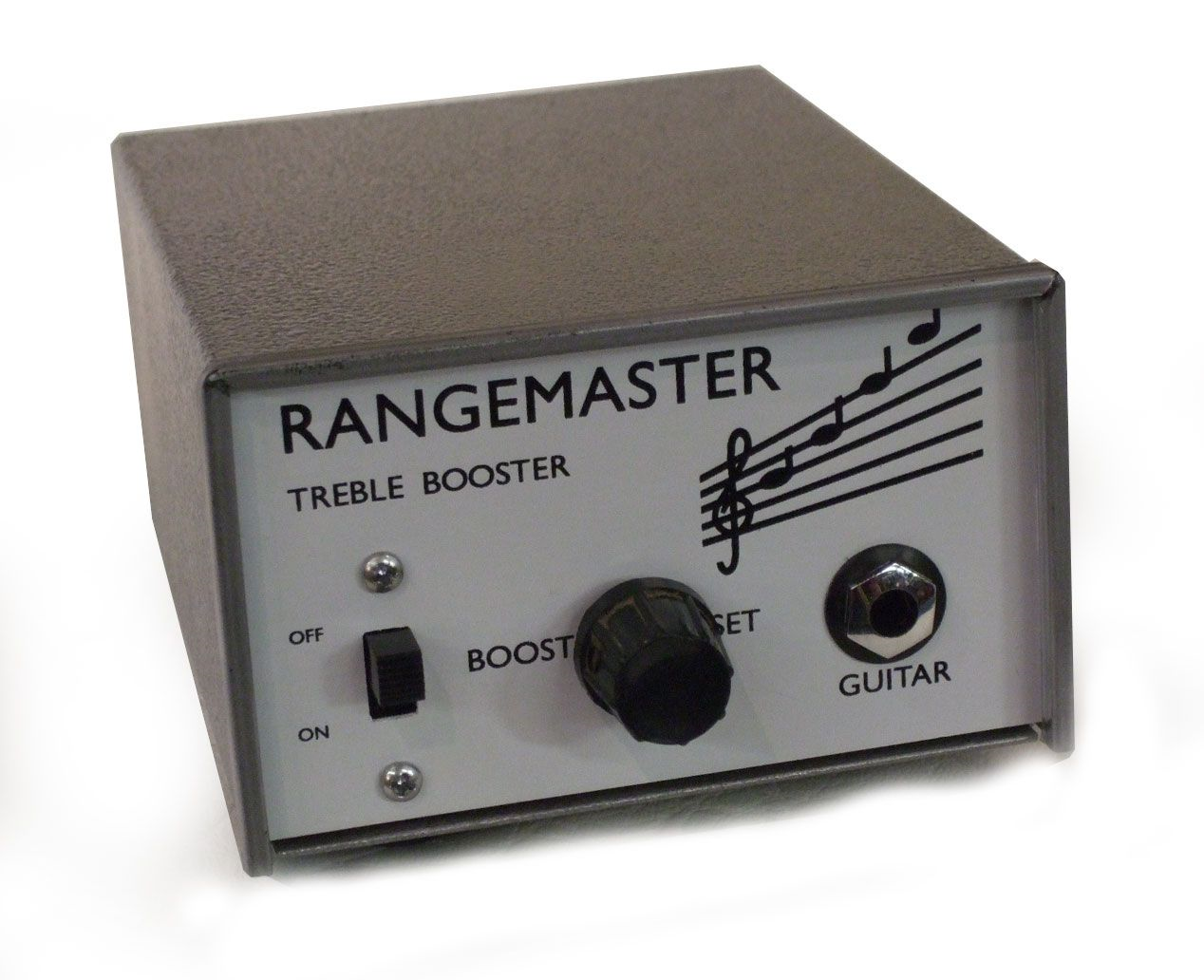
|
Intoduction of the Dallas Rangemaster Treble Booster.
|
1967
The very first wah pedal, Thomas/Vox cry baby wah-wah

|
The Thomas/Vox wah pedal was released with an image of Clyde McCoy on the bottom of the pedal in Febuary 1967. While Early versions of the Clyde McCoy featured his image on the bottom panel, this quickly changed to only his signature.
|
1968
First phase shifter, Shin-ei/Univox Univibe
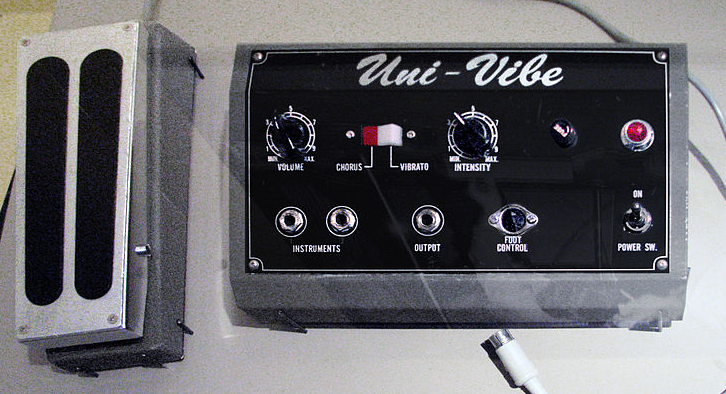
|
First phase shifter, Shin-ei/Univox Univibe.
|
1970
Worlds First Compact Rotating Effect, the Morley EVO

|
Worlds First Compact Rotating Effect, the Morley EVO-1.
|
1972
First compact compressor, the MXR Dyna Comp
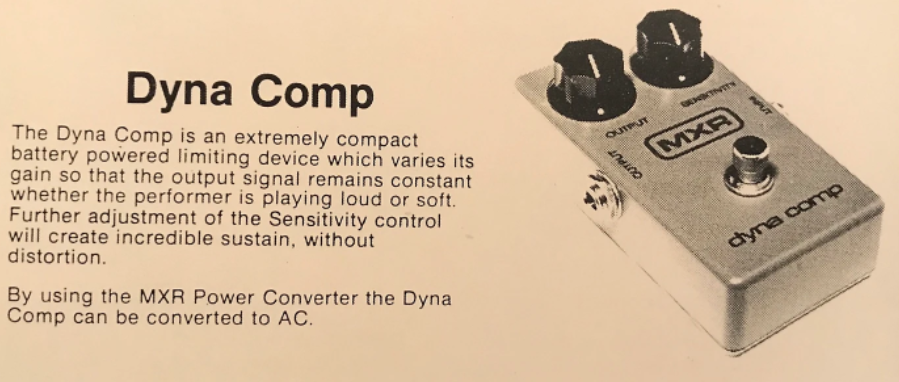
|
First compact compressor, the MXR Dyna Comp.
|
1972
The first commercial envelope filter, the Mu-Tron III
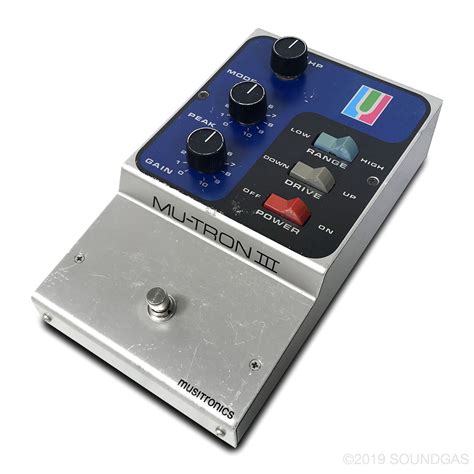
|
The first commercial envelope filter, the Mu-Tron III.
|
1974
First electro-optical volume and wah pedals
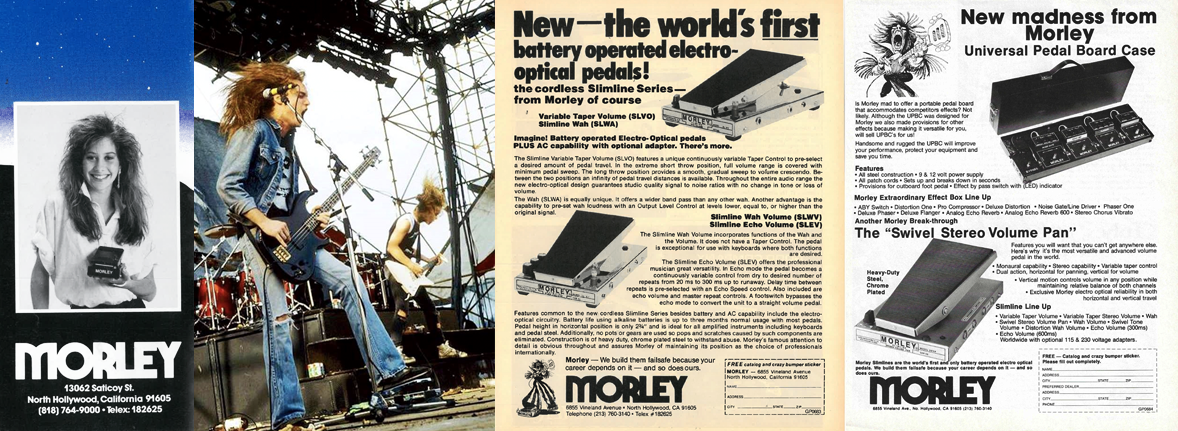
|
The first electro-optical design (LDR) volume and wah pedals are released by Morley (formerly TelRay), eliminating pots from their volume and wah pedals.
|
1974
MXR MX-104 Distortion +

|
The Distortion + uses a single op-amp and a pair of germanium diodes to ground for clipping. The effect features only Output and Distortion controls. Turning up the Distortion control increases the amount of distortion and at the same time boosts the treble in the signal.
|
1974
Introduction of the Maxon OD-880

|
Maxon OD-880 OverDrive Soft Distortion, precursor to the Tube Screamers (Ibanez would release their TS-808 in 1979).
|
1976
Boss CE-1 Chorus Ensemble
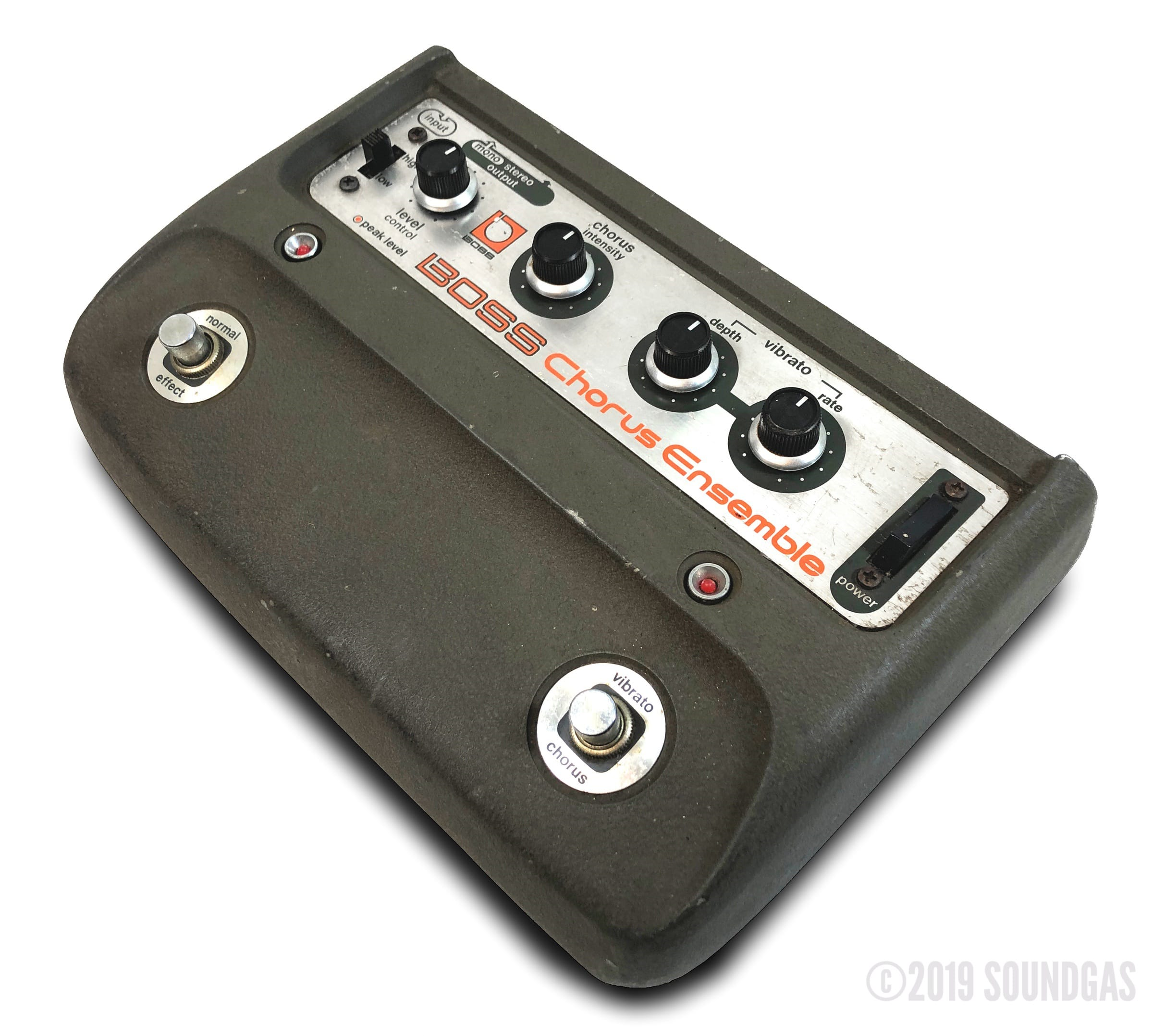
|
The first stand alone chorus, the Boss CE-1 Chorus Ensemble is introduced. The circuit is the same chorus/vibrato effect circuit from their 1975 JC 120 and 60 amps
|
1977
First stand alone flanger, A/DA Flanger
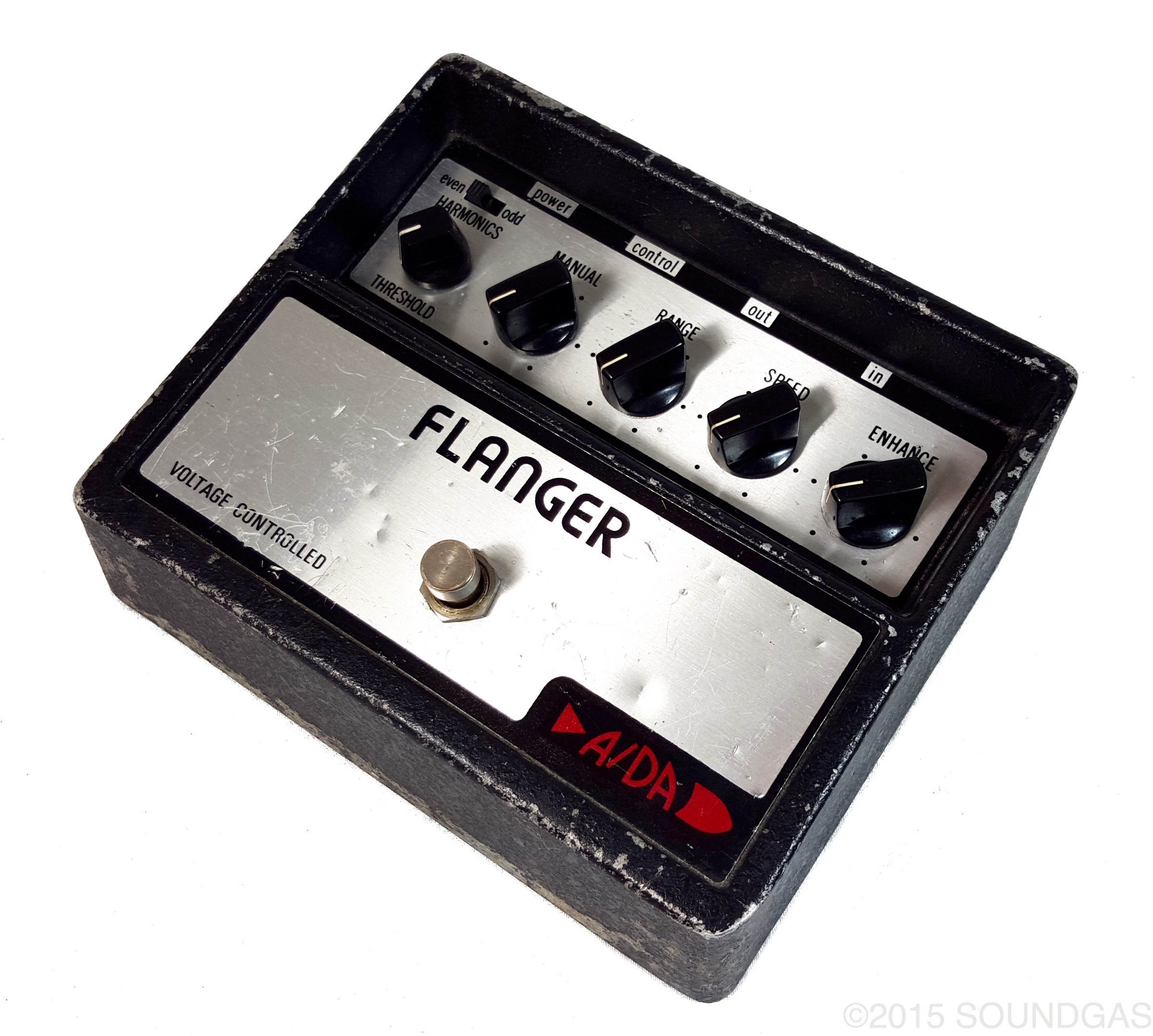
|
First stand alone flanger effect is released, A/DA Flanger.
|
1982
The first portable digital delay, The EHX 16-second Digital Delay
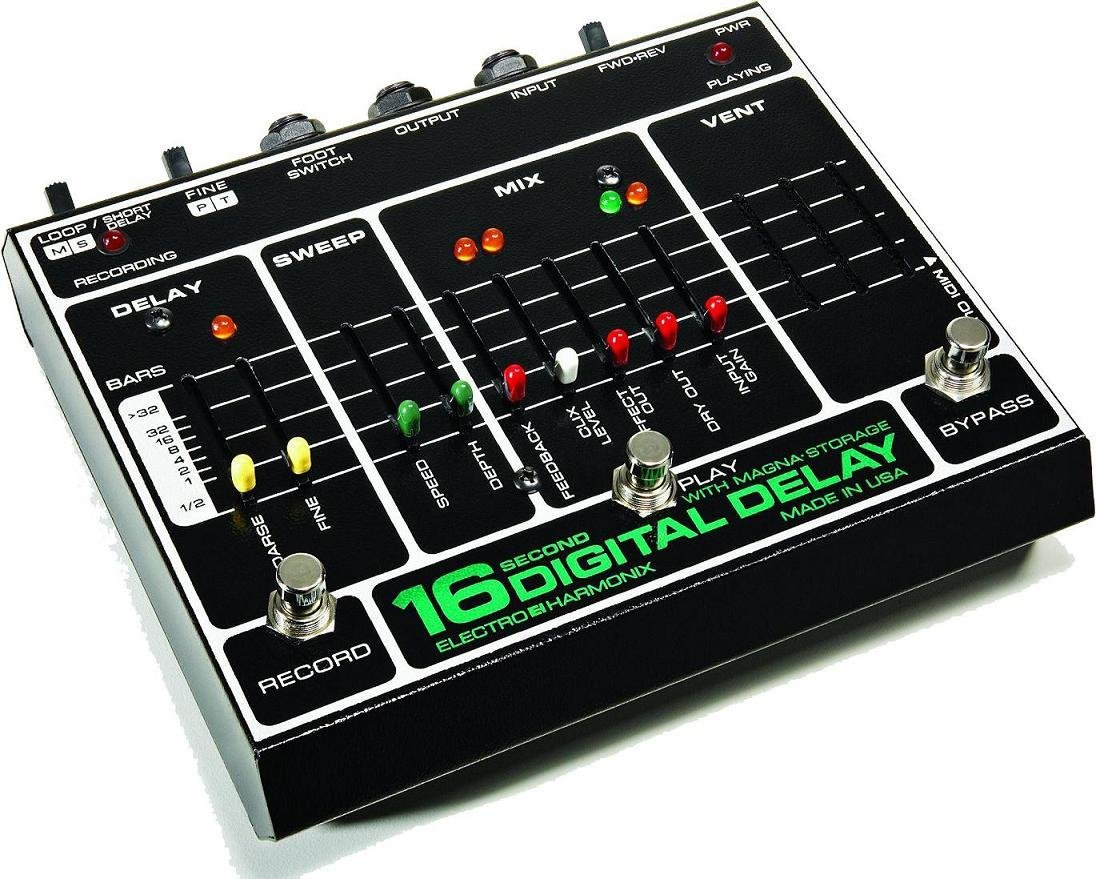
|
Electro-Harmonix released its 16-second Digital Delay, the first portable digital delay. Boss followed suit in 1983 with it's DD-2 Digital Delay.
|
 |
|

|
|
|
Copyright © HewittsGarageStudio.com, all rights reserved |
|
|
|
| |